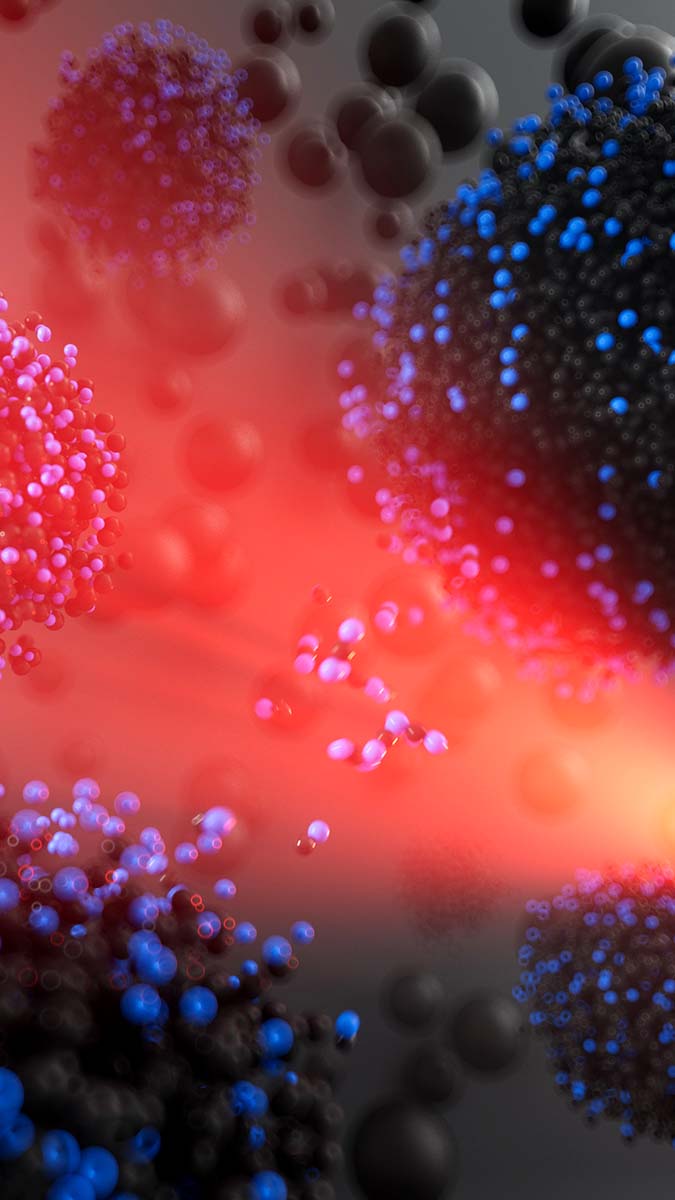
Rebecca Lindsey joins Michigan Chemical Engineering
New Assistant Professor Rebecca Lindsey’s work will focus on chemistry in multiscaled systems and material evolution under extreme and dynamically changing conditions.

New Assistant Professor Rebecca Lindsey’s work will focus on chemistry in multiscaled systems and material evolution under extreme and dynamically changing conditions.
Rebecca Lindsey grew up in central New Jersey often marveling at the sprawling chemical plants that lined the turnpike. Taken in combination with a love of chemistry, inclination toward computer building and programming and knack for problem solving, pursuing a degree in chemical engineering was a clear choice.
She got her start in computational research when her undergraduate mass balances professor, Jeffrey Potoff, at Wayne State University invited her to work in his computational group. She was immediately fascinated by how, through methods like molecular dynamics, one could watch systems evolve atom-by-atom. “And then I learned about so called ‘Monte Carlo’ methods, where the simulator could invent their own rules to increase simulation efficiency, so long as they obeyed a few simple principles — the seemingly endless possibilities drove me to pursue a PhD,” Lindsey explained.
Lindsey joined the department at the beginning of fall term as an assistant professor. She obtained her MS (2012), and PhD (2016) in chemical physics from the University of Minnesota (UMN), Twin Cities. She received a BS in chemical engineering from Wayne State University in 2010, with a concentration in molecular engineering and nanotechnology.
While at UMN, Lindsey was advised by Prof. J. Ilja Siepmann in the Department of Chemistry, whose group specializes in developing both advanced Monte Carlo (MC) molecular simulation approaches and molecular mechanics interatomic potentials (IAPs).
Her work at UMN focused on complex systems where she deployed MC simulations to elucidate the atomistic phenomena governing retention in liquid or liquid chromatographic systems to aid development of “greener” chromatographic technologies. Lindsey also developed tools automating IAP parameterization for modeling siloxane chromatographic stationary phases and a data-driven method for two-dimensional liquid chromatography column pair selection. Aside from the chromatography work, she also collaborated with Procter & Gamble to determine mechanisms for preferential and cooperative solute loading in surfactant systems.
Lindsey has been working within the Energetic Materials Center at Lawrence Livermore National Laboratory (LLNL); first as a postdoctoral researcher from 2016-2018, and thereafter as a staff research scientist.
At the highest level, her work at LLNL has focused on understanding material behavior under the extreme temperature and pressure conditions of 1000s of Kelvin or 10s to 100s of Gigapascals. Though seemingly exotic, these conditions can occur naturally (e.g., within the interior of planets, during lightning strikes, cometary impacts, and energetic material detonation) and are relevant to several experimental processing techniques.
Atomistic simulations can be a powerful tool for studying materials under these conditions due to the high spatiotemporal resolution they afford, but they have historically been hampered by the need for approaches simultaneously exhibiting the accuracy of quantum-based approaches and the computational efficiency of molecular mechanics methods.
To overcome this challenge, Lindsey developed a new AI-driven toolkit for simulating complicated reacting systems under extreme conditions with her team at LLNL. This capability has allowed them to foray into previously inaccessible problem spaces, including toward tailored synthesis of new nanocarbon materials.
During her time at LLNL, she also leveraged data science and machine learning tools to aid in interpretation of large experimental datasets and to develop age-aware material diagnostic and performance models from them.
“I am thrilled to join the U-M ChE faculty,” Lindsey says. “The students are unmistakably bright and driven, the research is collaborative, cross-disciplinary and top tier, and the faculty’s excitement for the department’s program is contagious. As someone who thrives on collaboration, the department is an ideal place to be.”
“I am thrilled to join the U-M ChE faculty. The students are unmistakably bright and driven, the research is collaborative, cross-disciplinary and top tier, and the faculty’s excitement for the department’s program is contagious. As someone who thrives on collaboration, the department is an ideal place to be.”
Rebecca Lindsey
Assistant Professor of Chemical Engineering
Her group’s research at U-M will expand upon the foundations she established at LLNL and will broadly focus on chemistry in inherently multiscaled systems and material evolution under extreme and dynamically changing conditions through advanced simulations and machine learning. This will include developing artificial intelligence-driven simulation tools enabling agile generation of robust machine-learned IAPs for quantum-accurate reactive simulation on unprecedented scales and deploying these tools to design and discover next-generation nanomaterials synthesized via shock compression for applications spanning quantum computing, catalysis, energy, drug delivery, national security and more.